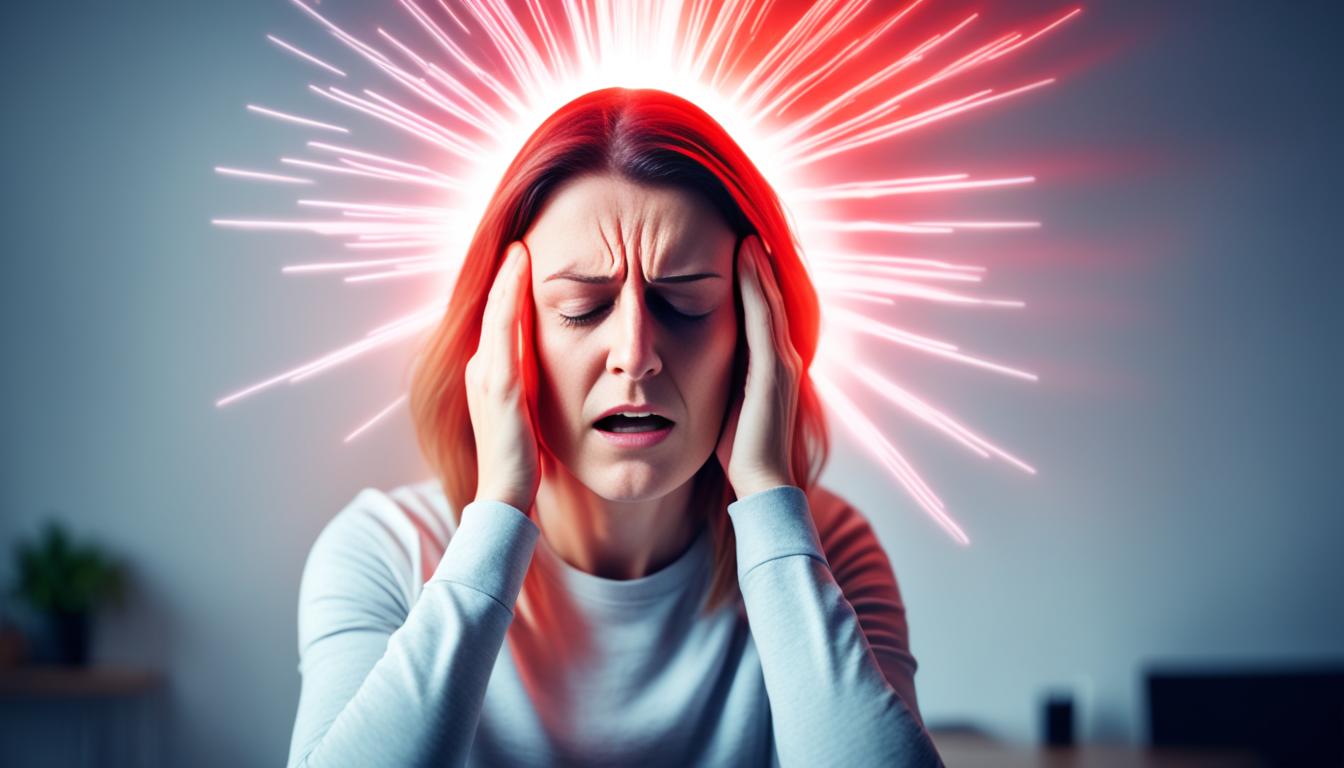Cluster headache, or headache cluster disease, is a serious type of headache. It causes intense pain on one side of the head or near one eye. This pain comes in cycles that can last for weeks or months, then stop for a while.
This headache brings unbearable pain, often felt as a sharp, piercing ache. It also leads to tearing, redness or a drooping eyelid, a stuffed up nose, and feeling restless. The true cause of cluster headaches is not fully understood. Yet, sickness, drinking, and poor sleep can start an episode.
Doctors diagnose cluster headaches by looking at your medical history, symptoms, and physical tests. Fast and strong treatments are used to stop the pain and keep more episodes from happening. These treatments include quick-acting drugs and others taken regularly to stop future headaches.
Key Takeaways:
- Cluster headache is a severe type of headache characterized by intense pain on one side of the head or around one eye.
- Cluster headache occurs in clusters or episodes that can last for weeks or months, followed by periods of remission.
- Symptoms of cluster headache include excruciating pain, tearing, redness or drooping of the eye, nasal congestion, and restlessness or agitation.
- The exact cause of cluster headache is unknown, but triggers can include smoking, alcohol consumption, and changes in sleep patterns.
- Diagnosis is based on medical history, symptom description, and physical and neurological examinations.
- Treatment options include fast-acting medications to relieve acute pain and preventive therapies to reduce the frequency and severity of episodes.
- Stem cell therapy is an emerging treatment approach for cluster headache, but further research is needed to establish its effectiveness.
Cluster Headache Treatment and Management
The aim of treating cluster headaches is to lessen the pain, shorten the headache episodes, and prevent future ones. Quick treatments like oxygen therapy and triptans are key to halting a headache.
Oxygen therapy lets you breathe in pure oxygen through a mask. It quickly eases pain for most in 15 minutes. Triptans, like sumatriptan, can be a shot or nasal spray to lessen symptoms. Octreotide, local anesthetics, and dihydroergotamine are other fast options.
For those with chronic cluster headaches, doctors often recommend calcium channel blockers such as verapamil. Corticosteroids, galcanezumab, and lithium also work well to prevent further attacks.
Vagus nerve stimulation and nerve blocks can lower how often headaches come. It’s vital to keep a steady sleep pattern, avoid alcohol, and handle triggers to stop attacks.
Melatonin and capsaicin might also ease pain for a few. Dealing with cluster headaches can be tough. But, getting help from doctors, therapists, and support groups is important in handling the pain.
| Treatment | Fast-Acting or Acute Relief | Preventive Therapy |
|---|---|---|
| Oxygen therapy | Yes | No |
| Triptans | Yes | No |
| Octreotide | Yes | No |
| Local anesthetics | Yes | No |
| Dihydroergotamine | Yes | No |
| Calcium channel blockers (e.g., verapamil) | No | Yes |
| Corticosteroids | No | Yes |
| Galcanezumab | No | Yes |
| Lithium | No | Yes |
Additional Therapies
- Noninvasive vagus nerve stimulation
- Nerve blocks
- Sticking to a regular sleep schedule
- Avoiding alcohol
- Managing triggers
- Alternative medicine options such as melatonin and capsaicin
Please note that this table is for illustrative purposes only and may not include all treatment options. Consult with a healthcare professional for personalized management of cluster headache.
The Potential of Stem Cell Therapy for Headache Cluster
Stem cell therapy is a new way to treat people with headache cluster disease. It uses stem cells that can become different types of cells. This means they can help fix damaged cells or ones that don’t work right.
This therapy targets fixing the cells involved in causing cluster headaches. It aims to not only relieve pain but also reduce how often and how bad the headaches are. This could bring long-lasting relief to those suffering from the disease.
Early studies are promising. They show that using stem cells is safe and can ease cluster headache symptoms. But, we need more research to be sure how well it works and for how long.
If you’re interested in stem cell therapy, talk to a doctor first. They can help you understand the risks and benefits. While this treatment is exciting, it’s still new. So, it’s important to be careful and keep studying its effects.

